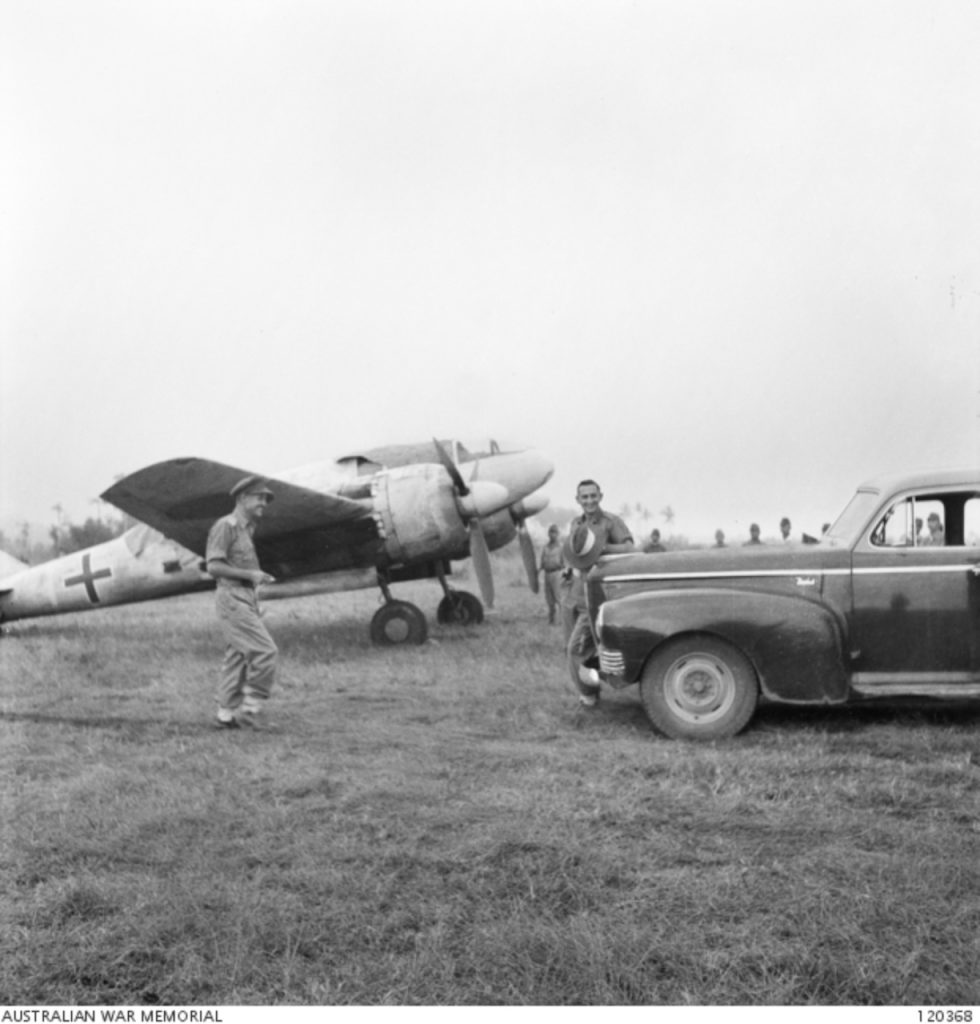There were no boundaries for Japanese Brutality during WW2 – This is the story of Makassar, Celebes
The Makassar area of Celebes was defended by approximately 1000 men of the Royal Netherlands East Indies Army commanded by Colonel M. Vooren. On realising he could not defend the coast, he planned to fight a guerrilla war inland. The Japanese landed near Makassar on 9 February 1942. The defenders retreated but were soon overtaken, captured and taken POWs.
Even today, we hear and know little of the Celebes in WW2 – found off the south east coast of Borneo. Today it is known as Sulawasi.
Although many had left, the remaining Europeans on the Island were rounded up and imprisoned by the Japanese.

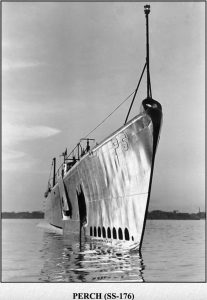
Survivors from HMS Exeter, USS Perch submarine, US Pope destroyer and other ships were taken POWs of Japan, initially to Makassar. There were about 70 Australians.
Many POWs later were sent to Japan.
Please read this personal story of a survivor from HMS Exeter
‘A general summary of the movements of HMS Exeter愀 ships company after she was sunk on March 1st 1942.
All the survivors (approx 600) were taken to Makassar with a short stop in Banjermassen (South Borneo) Shortly thereafter the Senior officers were sent to Japan (Zentsuji).
In Oct. 1942 a mixed group of 200 mostly from Exeter but also from Encounter, Stronghold, USS Pope and Perch together with 800 Dutch moved to Nagasaki in the Asama Maru.The destination was the island of Koyagi, the site of Fukuoka 2 camp.
In Jan 1943, 200 Exeters were sent to work at a nickel mine in Poemalla (Eastern Celebes) returning in Sept with serious casualties. Another group worked on an airport at Marros(Sorry-no details) Finally a small group of Officers and senior Ratings were moved to Java in 1945.
Officers in Japan (including me) were moved from Nagasaki to Hoten (Manchuria – Mukden) in April 1945.’
Above is copied from http://www.mansell.com/pow_resources/camplists/other/makassar_main.html
Below: Some of the reports of Japanese brutality – (our thanks to Mansell Website.)

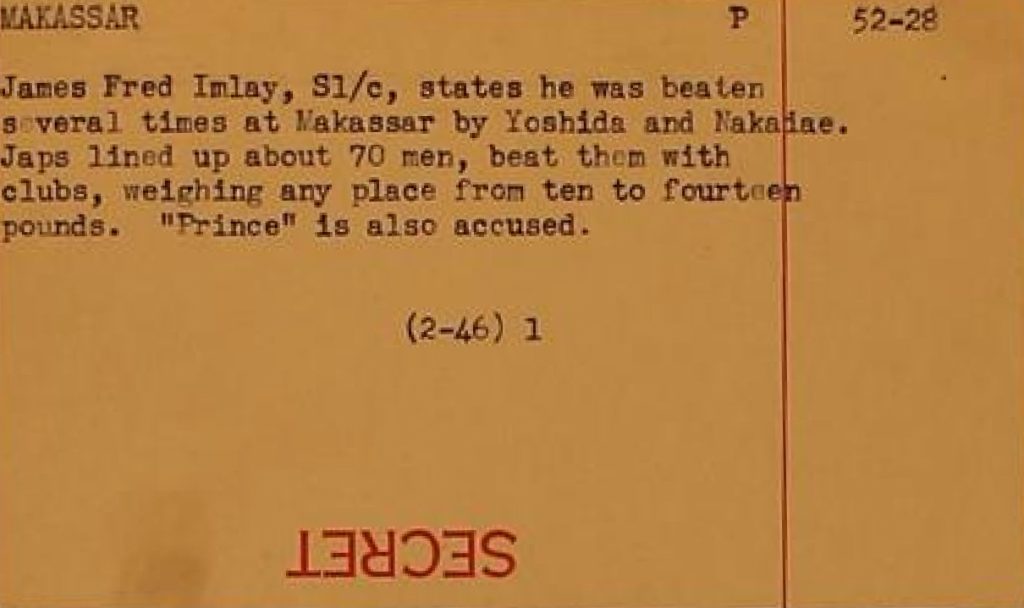


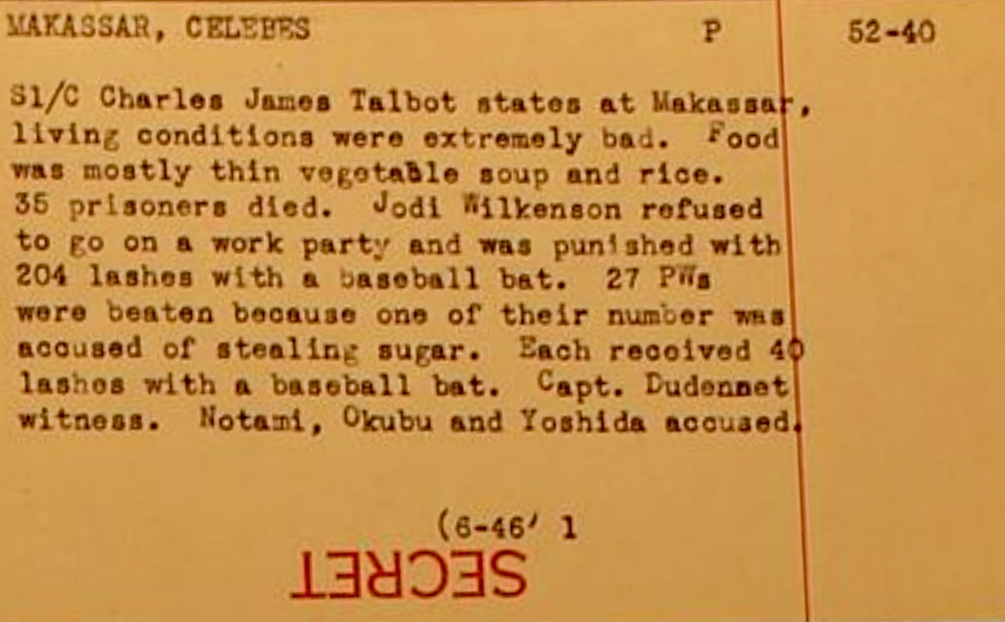
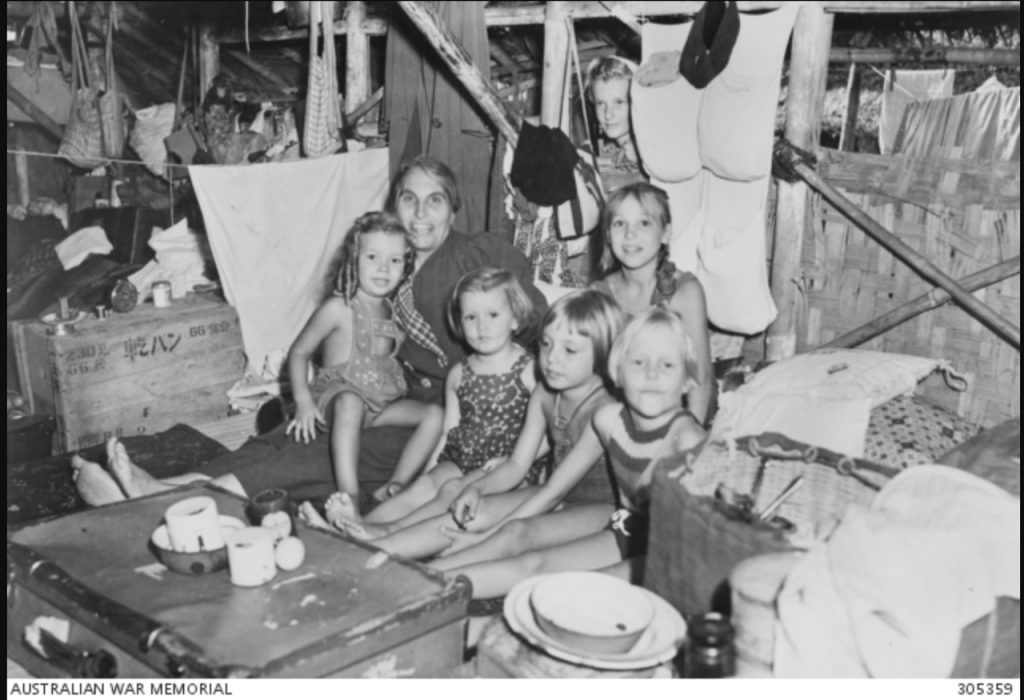
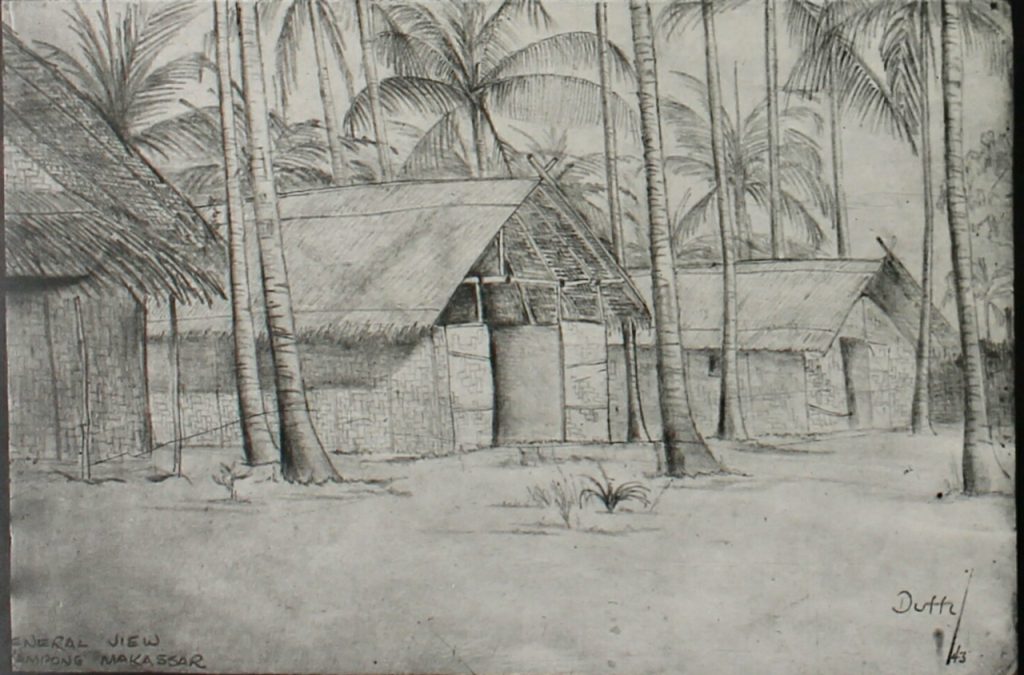

In 1945 the Allies were preparing to invade Japanese held territories. The following is just a little of the information we have gathered, in fact there were more than 300 pages about Celebes.
They have been copied from the Monash Repository:
https://repository.monash.edu/collections/show/54
Allied Geographical Section: WWII Special Reports
‘In 1942, after a series of directives from General MacArthur’s Headquarters, the Allied Geographical Section (AGS) was formed with the task of compiling all the available geographical intelligence on the largely unmapped and underexplored south-west Pacific area (SWPA). During its lifespan (1942-45), the AGS, produced 3 major types of publications: Terrain Studies; Special Reports; and Terrain Handbooks. The Terrain Studies were the most important and complex works, designed to give the most comprehensive information. Thus, they contained text, diagrams, photographs and various sized and coloured maps. The AGS’ Special Reports were produced for planning and operational staff. They often give information on specific problems.’
You will read many interesting details about Celebes at that time.


Below: Directive from General Headquarters, SW Pacific Area.


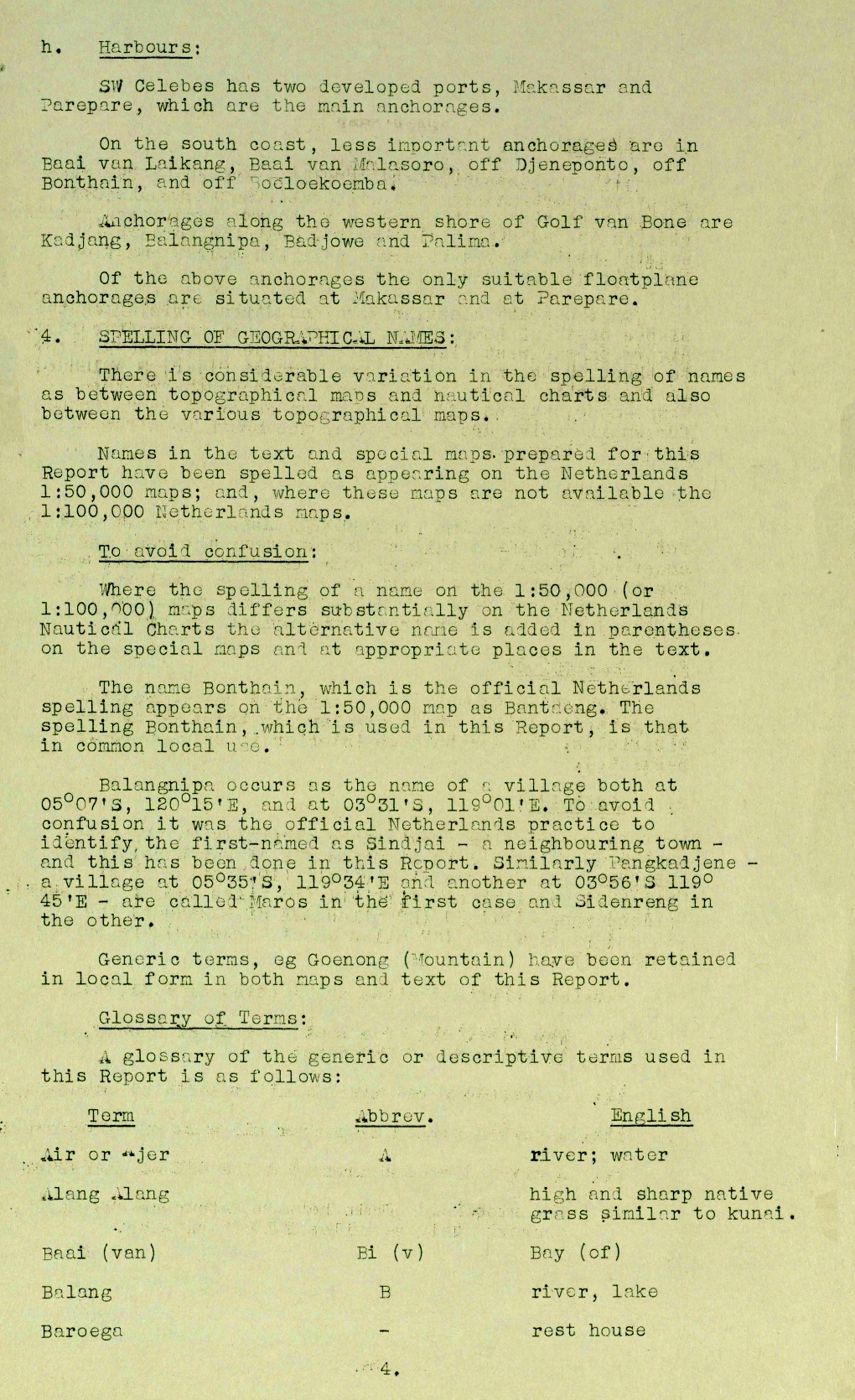





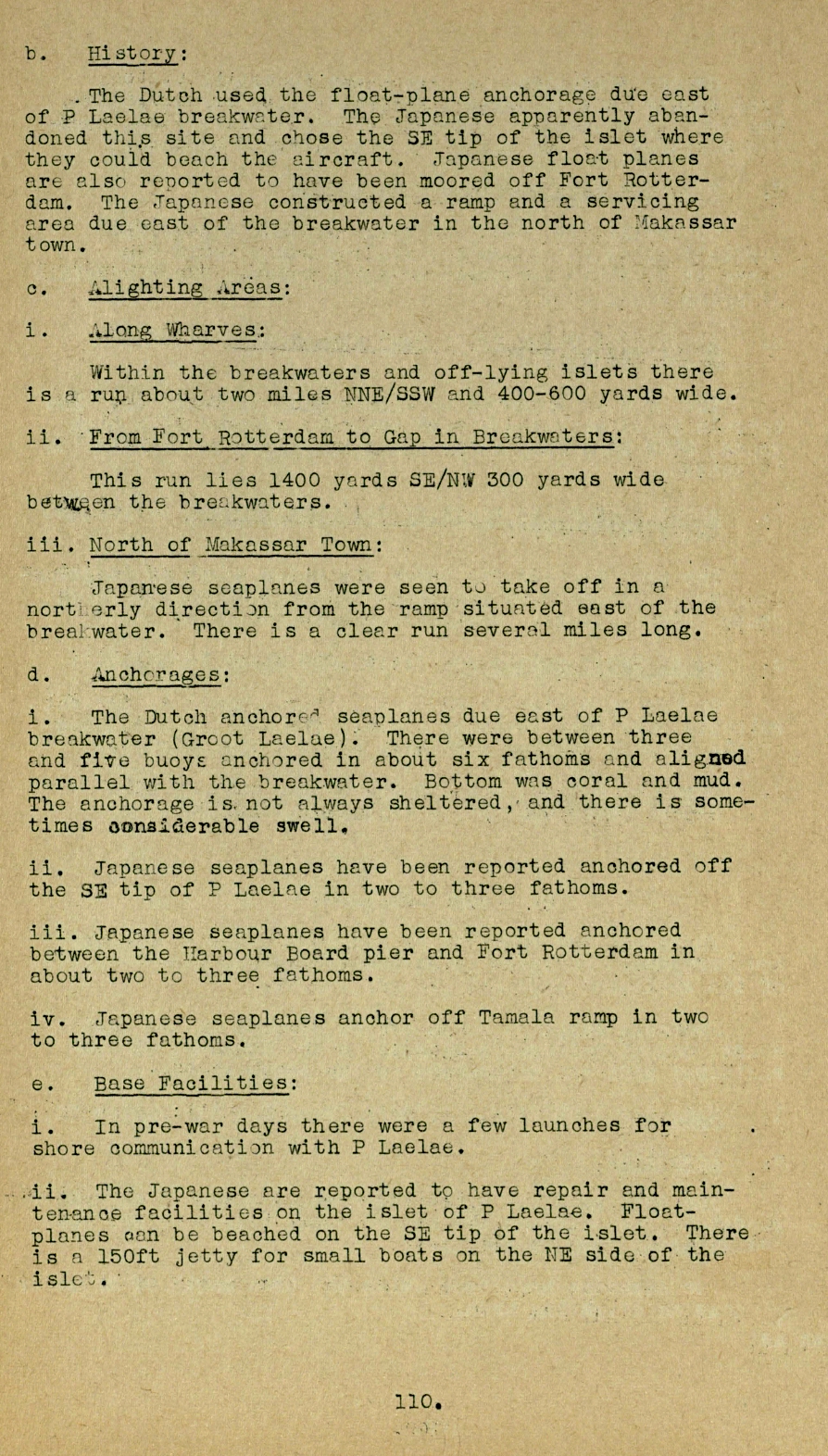

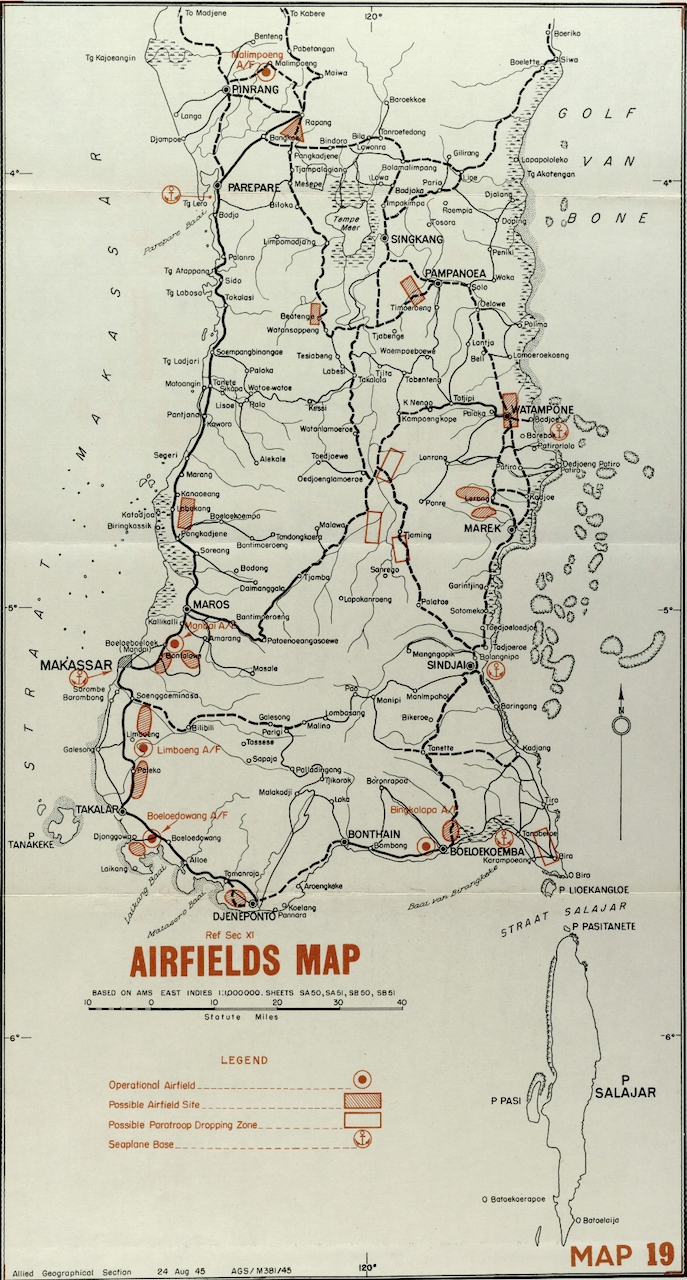



Below: Transport



Below: Towns & Important Villages

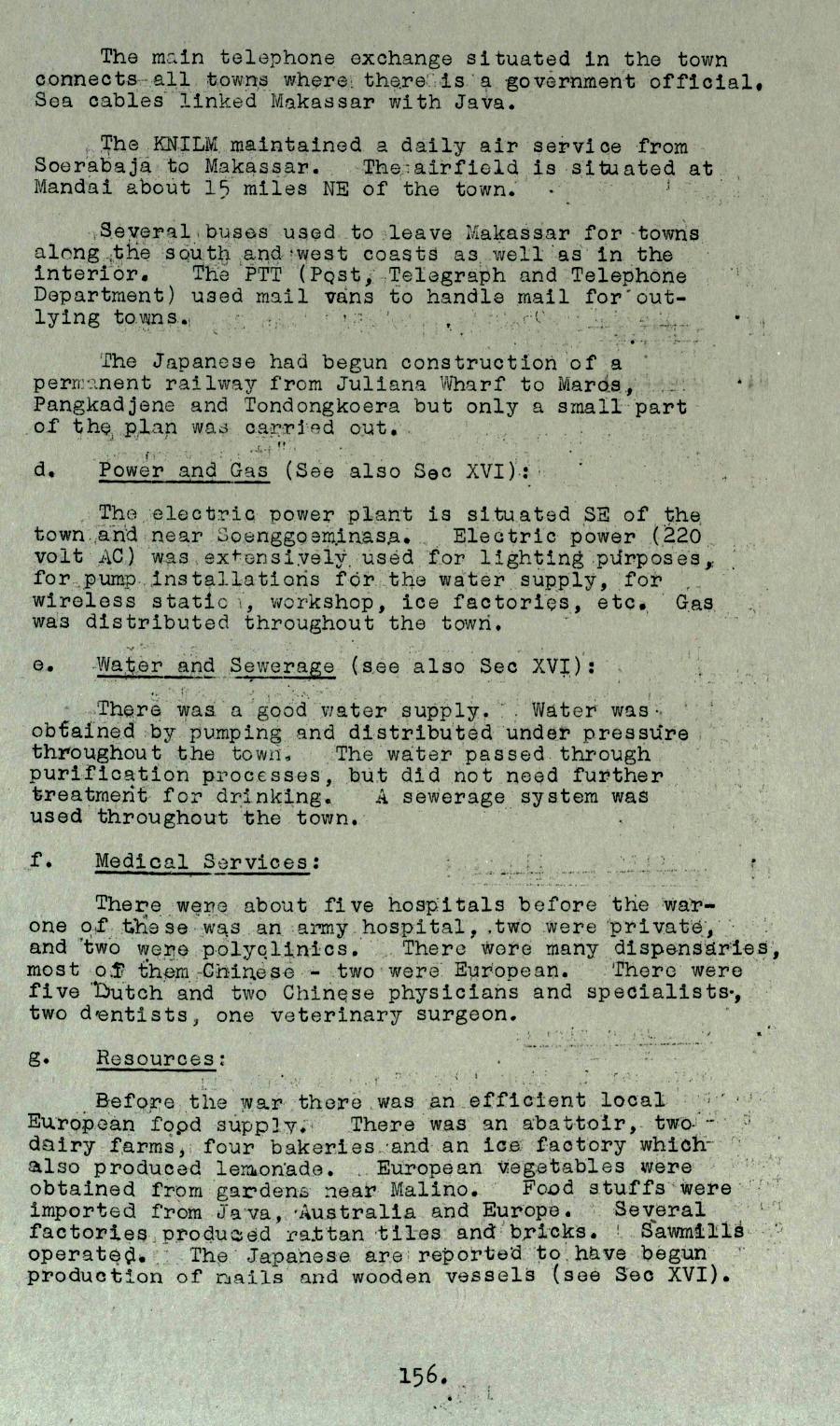
Below: Resources, Repair Facilities
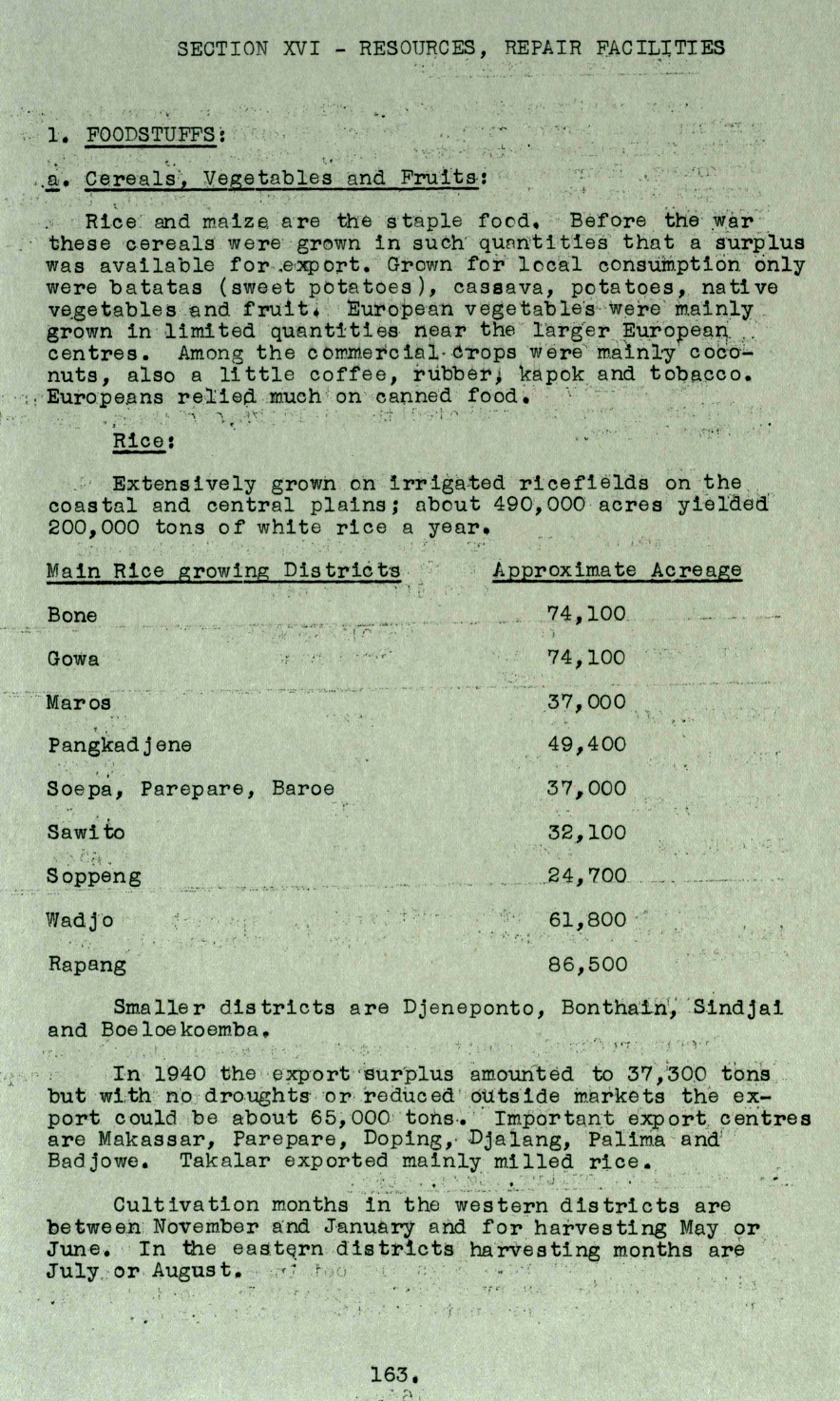

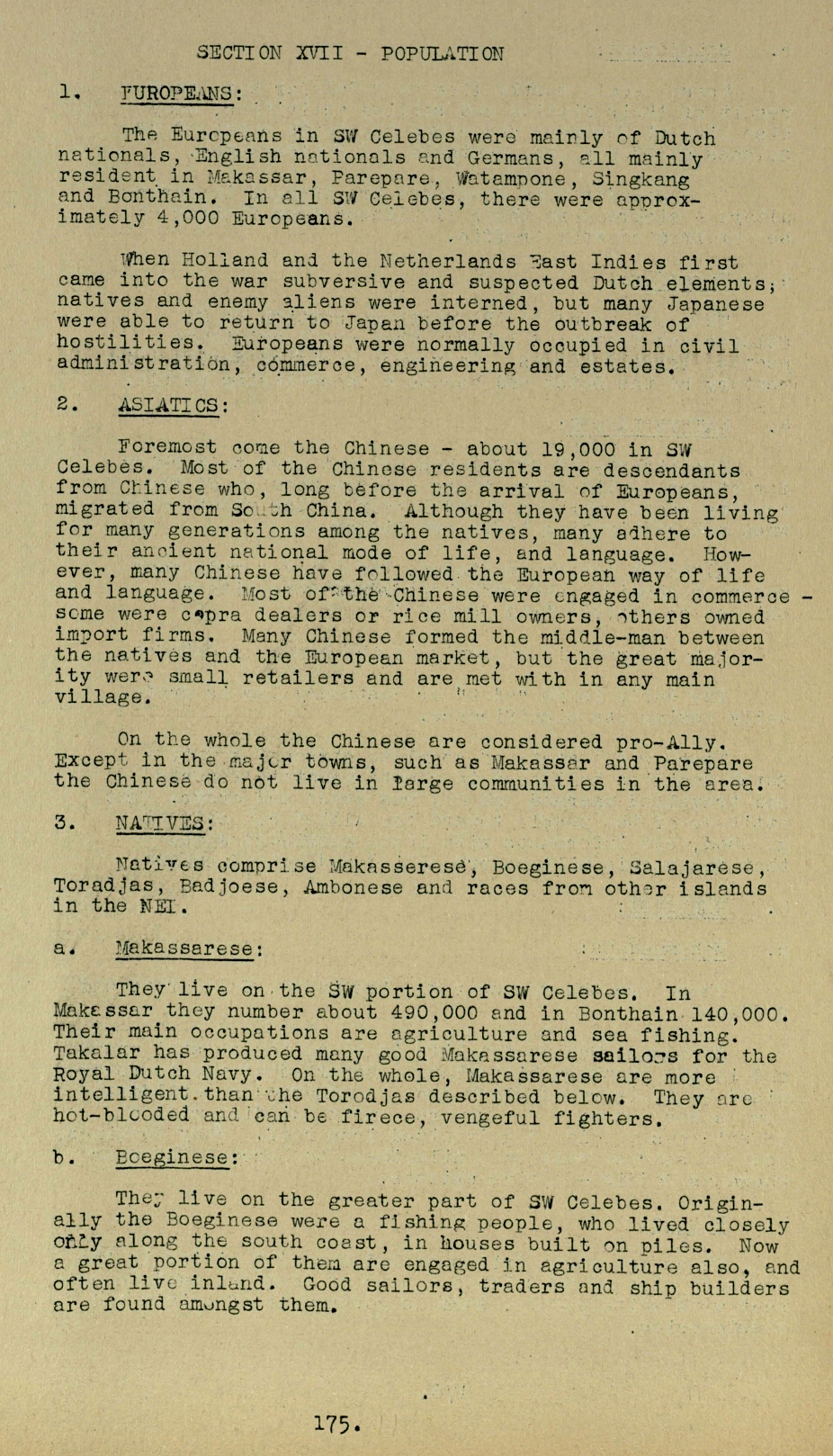
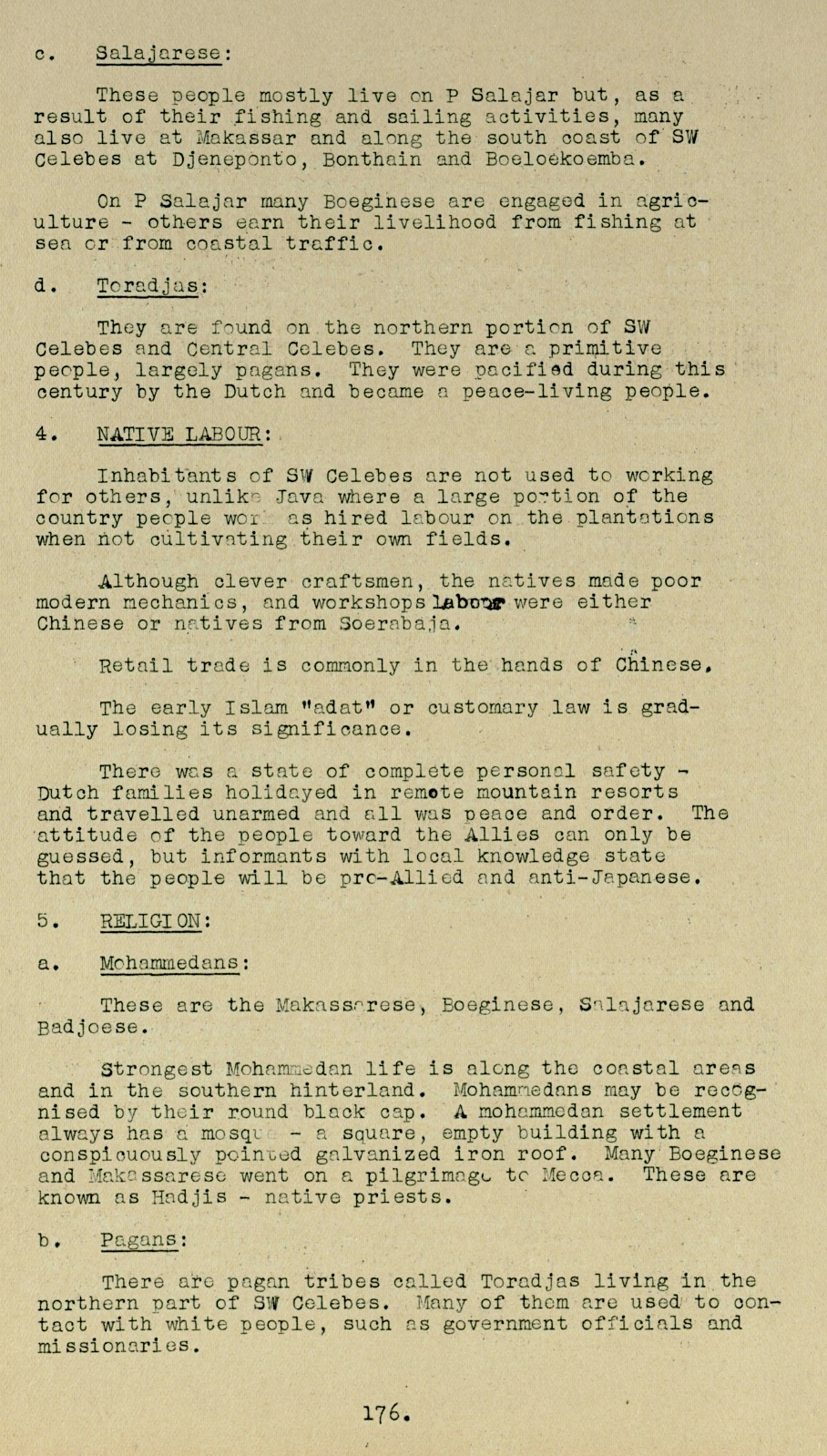





Below: Medical Problems & Tropical Diseases
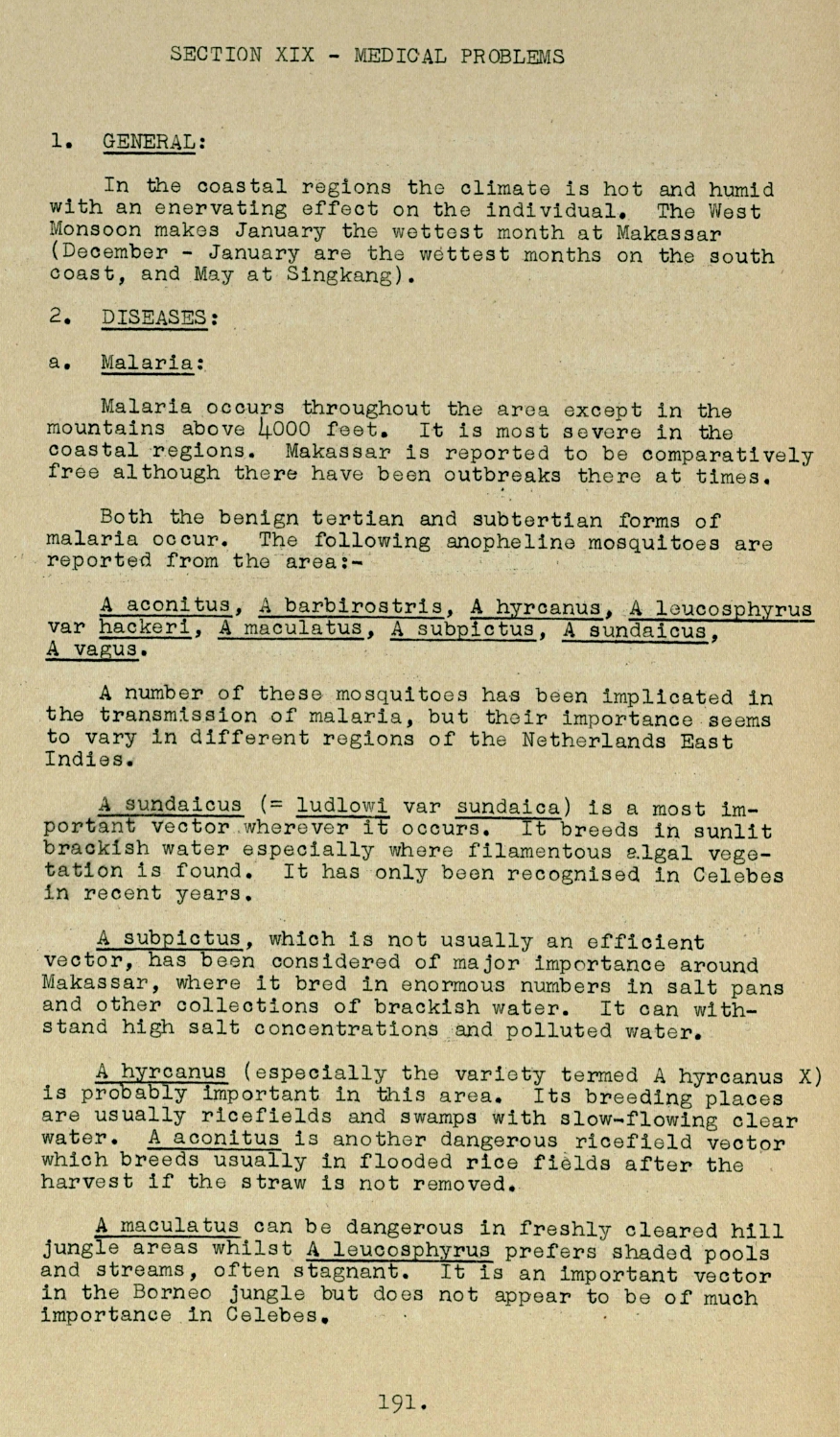
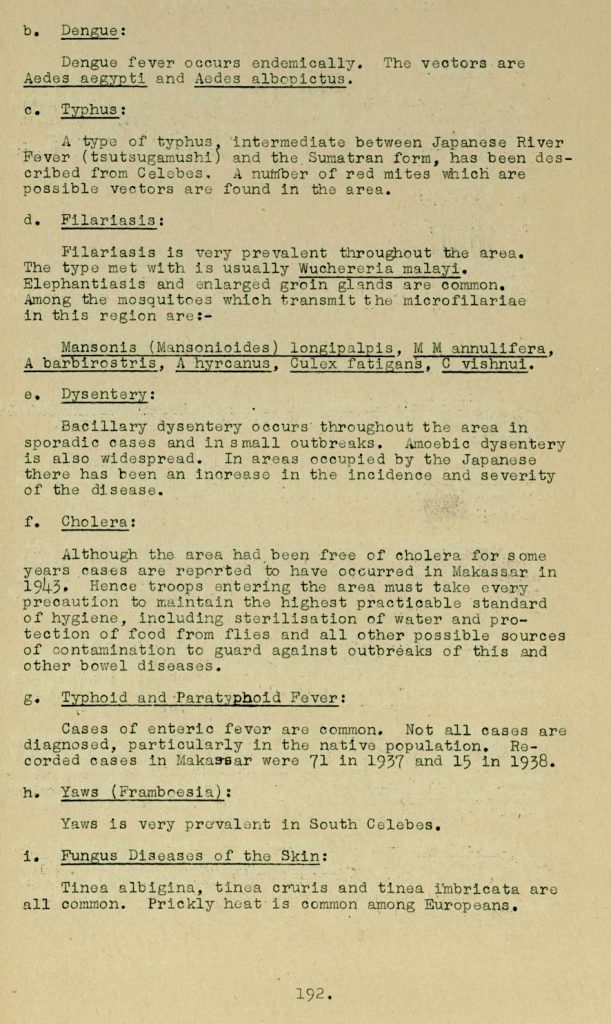

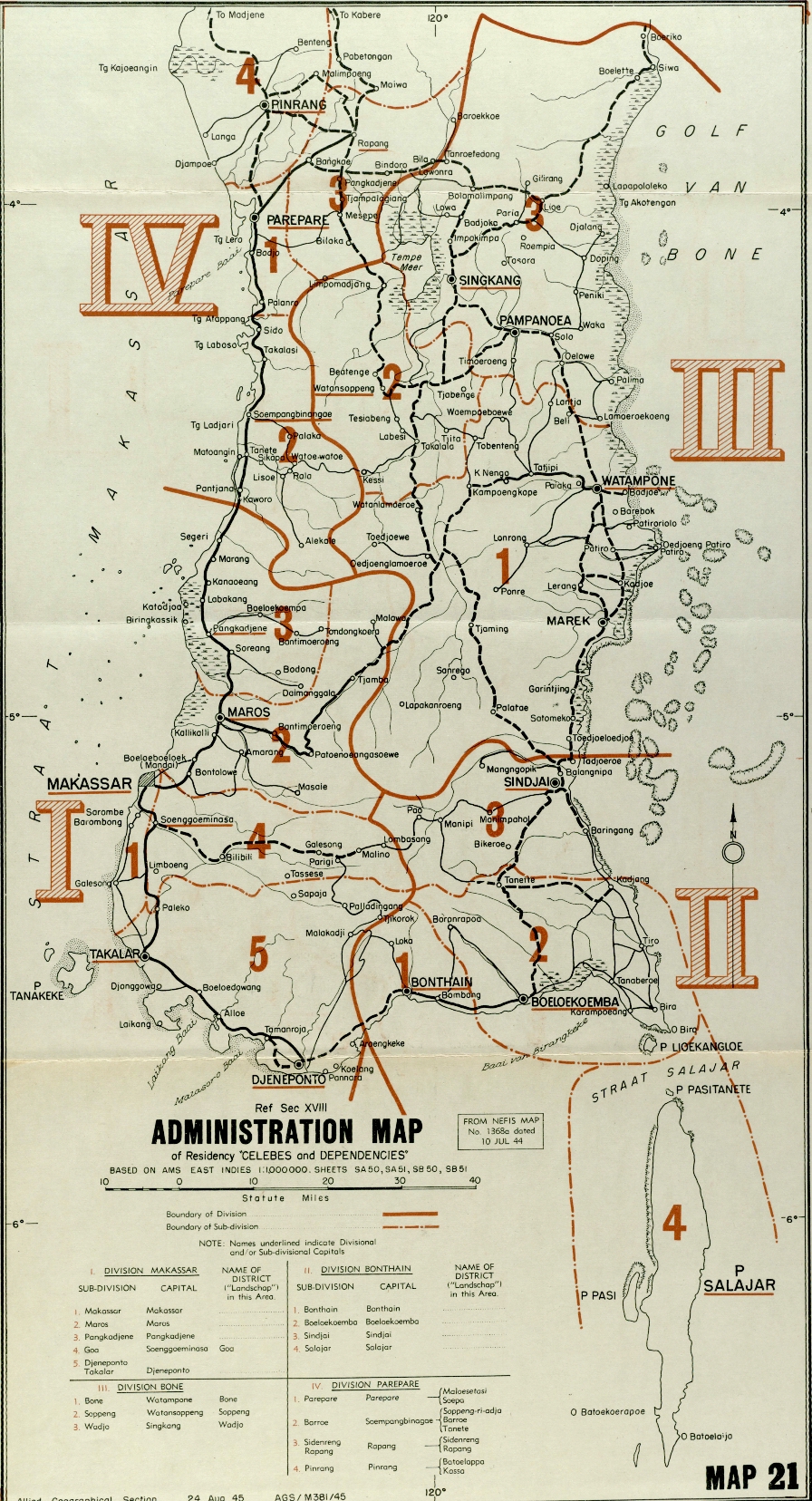


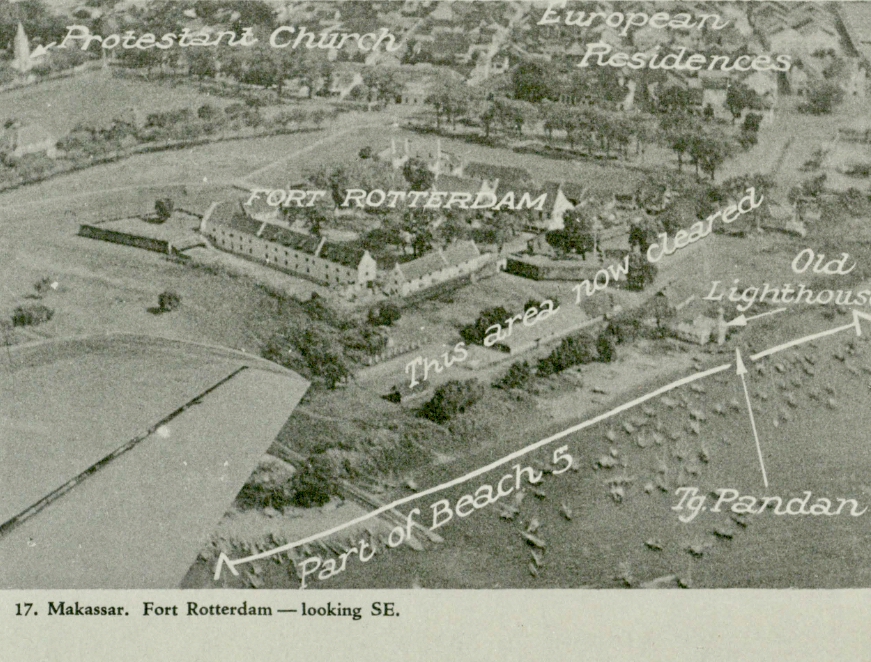


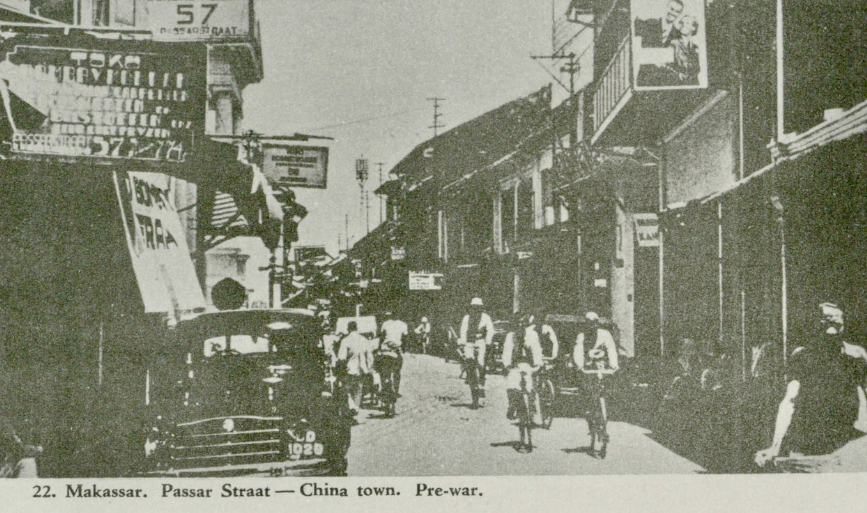


The first Australian troops arrived 21 September 1945. British and American POWs were moved from the Military Hospital to Morotai. Unfortunately it was not until December when the last of the Dutch civilians were evacuated.
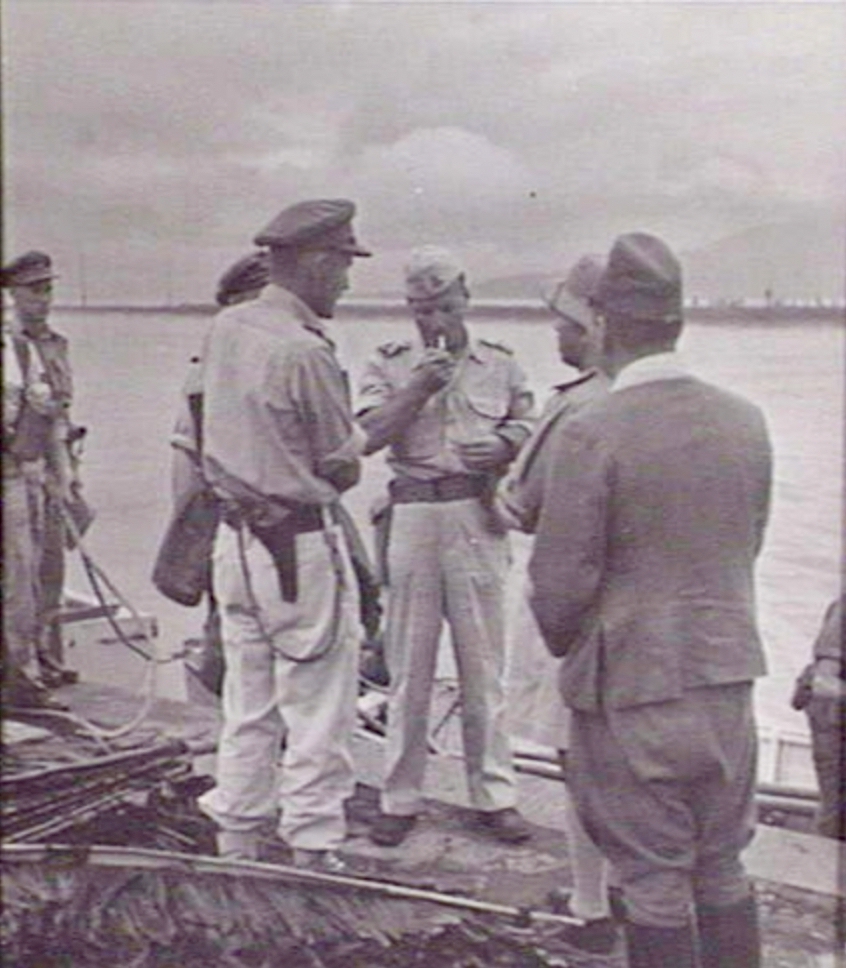
MENADO, CELEBES 1945-10-02. QX6236 LIEUTENANT COLONEL R. A. C. MUIR, COMMANDER OF MENADO FORCE IS MET ON THE DOCK BY A JAPANESE SURRENDER PARTY. (PHOTOGRAPHER SSGT R. L. STEWART)
